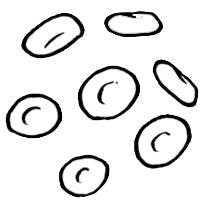Weighing Risks and Benefits With the Use of Tyrosine Kinase Inhibitors for the Treatment of Chronic Myeloid Leukemia
Q&A With Moshe Yair Levy, MD: Weighing Risks and Benefits With the Use of Tyrosine Kinase Inhibitors for the Treatment of Chronic Myeloid Leukemia
Moshe Yair Levy, MD

Moshe Yair Levy, MD
Can you discuss the broader trajectory and growing prominence of tyrosine kinase inhibitors (TKIs) within the chronic myeloid leukemia (CML) treatment landscape?
LEVY:TKIs are the accepted treatment modality for CML [and Philadelphia chromosomepositive acute lymphoblastic leukemia (Ph+ ALL)]. They have revolutionized [the] treatment of CML, with most patients having life spans similar to those of age-matched controls.
What are some of the most significant differences between first-, second-, and third-generation TKIs?
LEVY:In general, [second-generation] TKIs are more potent. We see faster and deeper responses. We therefore also see higher rates of successful TKI discontinuations. They have not been studied as long as imatinib [Gleevec], and we do not have long-term safety data to the same extent as imatinib. We are seeing some emerging toxicities with the [second-generation] TKIs. There is only 1 approved third-generation TKI, ponatinib [Iclusig]. It is certainly the most potent BCR-ABL TKI, and it achieves disease control in many cases of refractory CML [or Ph+ ALL]. While its efficacy is quite impressive, it has a concerning toxicity profile, particularly myelosuppression and cardiovascular events.
Can you talk about the recent study you coauthored comparing ponatinib and bosutinib and why it’s important to have datacomparing agents?
LEVY:I personally feel that the NCCN [National Comprehensive Cancer Network] guidelines have created some confusion in treating progressive/refractory CML. It is important to remember that CML is a uniformly fatal disease in the absence of effective therapy. The NCCN guidelines currently encourage cycling through all the TKIs and using ponatinib as a last resort. Therefore, if we look at the real-world usage of ponatinib and bosutinib [Bosulif], they are both used in third-line or greater settings. The efficacy of bosutinib in this group of patients is quite modest. Chances of treatment success decrease with each line of therapy. I would favor the use of ponatinib after failure of a second-generation TKI and would not cycle through other drugs that have a very low likelihood of a meaningful response. 
What are some of the factors that you considered when designing the study, and what are some of the most important findings?
LEVY:It was a matched, adjusted, indirect comparison. I felt it was important, as most ponatinib and bosutinib usage occurs in [a] third-line [setting] or later. They are very different drugs with dissimilar efficacy and toxicity profiles. Based on these surrogate measures of patient benefit/risk profiles, ponatinib appears to provide a net overall benefit versus bosutinib in third-line, [chronic-phase] CML.
Based on these findings, can you share any directions for future research?
LEVY:I think we need to better define risk/benefit profiles for TKIs in [the] treatment of CML. There are 5 approved TKI therapies in CML, leading to some inappropriate utilization of these therapies. With so many treatment options, clinicians may change therapy too frequently or not optimally match the TKI risk/benefit profile with the disease to comorbidity profile of the patient.
What is the overall significance of the study’s results?
LEVY:Most CML treatment is done in community sites. Community oncologists do a tremendous job of keeping up with a large amount of new treatments and updated findings. Unfortunately, in more rare diseases such as CML, outcomes are not always optimal in sites that see only few such patients. I am hoping that this study will provide more understanding of the limitations of TKIs in difficult-to-treat CML, as well as proper sequencing of TKIs.
What would you like to see emphasized both in the research and drug development spectrums when it comes to the continued evolution of CML treatment?
LEVY:Although most patients with CML do well with TKI therapies, [this] treatment is not curative for most [patients]. A small percentage of patients who achieve a deep molecular response can have TKIs discontinued. This ongoing treatment is associated with high financial costs, as well as potential toxicities. We need to see more potentially curative treatments. An unmet medical need remains for individuals with CML who have true resistance; those people tend to be the worst. When selecting treatment, everything is a risk to benefit ratio. The notion that disease is salvageable at any time creates the impression that there is nothing to lose by cycling through TKIs. Studies have shown, however, that later lines of therapy do worse and that the odds of achieving meaningful interventions decrease greatly with progressive lines of therapy, even with second- and third-generation agents. Therefore, we want to get patients on effective treatment as early as possible.












